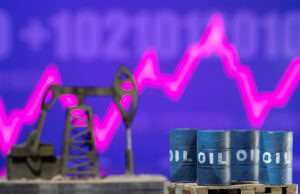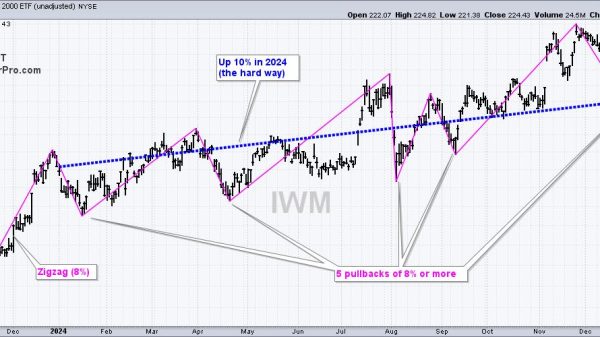STOCKHOLM – About 1,000 years ago, a Viking woman named Ingrid built a wharf to load ships at a bay on the Swedish coast and commemorated the site with a looping runic inscription on a grey boulder.
Today Ingrid’s harbor, surrounded by birch and pine trees, is high and dry, on land 5 meters (16 feet) above sea level and 20 kms (12 miles) inland from coastal Stockholm, on the Baltic Sea.
Land across much of the Nordic region has been rebounding since the end of the Ice Age about 12,000 years ago, as a heavy smothering of ice up to 3 km (1.9 miles) thick melted away.
That rise should make the region an unlikely candidate to suffer problems from a global rise in ocean levels as seas warm and glaciers melt – a threat for many low-lying nations and coastal cities around the world, from Shanghai to Miami.
But these days, yellow cranes, barges and fleets of bulldozers, trucks and other construction machinery clog the heart of Stockholm – a sign that even Sweden’s luck as a bastion against rising oceans is running out.
The country is spending 11.5 billion Swedish crowns ($1 billion) to upgrade water-control gates and locks in an effort to keep Lake Mälaren – a source of drinking water for 2 million people – protected from the Baltic Sea at the point the two meet in Stockholm.
Global sea levels are rising about 4 mm a year, double the rate of the 20th century, and may soon overtake the 5 mm annual rise in land elevation in the Stockholm region.
The lake is still 70 cm (2.2 feet) above current sea level and the Slussen project, due for completion in 2025, is designed to fend off a worst-case increase in sea levels of up to 2 meters (6.5 feet) in the coming century.
During storm surges, Slussen’s gates will prevent salty Baltic water from reaching the 120-km-long freshwater lake. Another key function of the project is to channel excess water from the lake out to sea after heavy rains or the spring snow melt, to prevent flooding.
“We’re lucky to have this post-glacial uplift,” said Sofie Schöld, an expert on rising oceans at the Swedish Meteorological and Hydrological Institute.
The country has gained about 10,000 sq km (3,860 sq miles) of land – an area about the size of Jamaica – since Viking times, experts say.
But the pace is slowing, and “Sweden now definitely has headaches about rising sea levels”, Schöld said.
HOTTER, HIGHER
Global temperatures have risen more than 1.2 degrees Celsius (2.2 Fahrenheit) since preindustrial times and are now swiftly approaching a 1.5C degrees of warming mark that scientists fear could herald a transition to far costlier and deadlier climate change impacts.
The 2015 Paris Agreement, a pact among almost 200 nations, set a goal of limiting global warming to “well below” 2 degrees Celsius (3.6 Fahrenheit) while “pursuing efforts” for 1.5C.
But with fossil fuel use still rising globally, despite pledges to slash emissions, 1.5C of warming could be passed within a decade, top climate scientists say.
They fear that could trigger irreversible ecological tipping points, from surging sea levels as polar ice melts to spiking temperatures as methane – a potent driver of warming – escapes thawing permafrost.
A hotter planet is also expected to spark more extreme weather, crop failures, species extinctions, migration and soaring personal and financial losses for many people around the planet.
Last year, the Intergovernmental Panel on Climate Change said global sea level rise might be limited to 30 cm this century if emissions are slashed to meet the 1.5C goal. If emissions remain high, the rise could be up to a meter, it said.
But it also warned that seas could rise almost 2 meters (6.5 feet) if higher emissions drove the collapse of ice sheets in Antarctica and Greenland.
Worryingly, a study in the journal Science in August estimated that Greenland and West Antarctica, which together lock up ice equivalent to about 10 meters (32 feet) of sea level rise, could pass a “tipping point” at just 1.5C, triggering an irreversible meltdown that would redraw the world´s coastlines.
“We may have made the commitment to 10 meters of sea level rise in the long run. The only comfort is that it is an apocalyptic vision on a timescale … which is probably at least 1,000 years,” said Tim Lenton, a climate change and earth system science professor at the University of Exeter and an author of the study.
But smaller increases in sea level rise already present a growing threat to many low-lying cities and countries, particularly as wilder weather drives stronger storm surges of salty water inland.
IMPERILED ISLANDS
For many of the 39 members of the Alliance of Small Island States (AOSIS), sea level rise is today an acute risk to coastal communities, vital infrastructure and important economic pillars such as agriculture and tourism.
In the south Pacific island of Tuvalu, for instance, “groundwater is no longer drinkable, saltwater intrusion damages crops, fisheries are dwindling, and families are more prone to water-borne disease”, said AOSIS chair Walton Webson, of Antigua and Barbuda.
Fiji, another Pacific island nation, spent about $500,000 to relocate a first community, Vunidogoloa, away from the coast in 2014, and plans to move more than 40 others inland.
“Loss of land is beyond adaptation efforts. This devastation is happening before our very eyes,” Webson said.
He said the world’s “continued addiction to fossil fuels” was a huge frustration for island countries, who are among those most at risk.
“AOSIS has long championed ‘1.5 to stay alive’, and it is devastating to see this goal faltering due to the lack of ambition from some industrialized countries,” he said.
But “make no mistake – (even) warming at 1.5C is no ideal situation for small island developing states”, he added.
SAFE FOR 100 YEARS?
In Stockholm, the new Slussen lake-protection project, now under construction, will include cafes, bars, bridges, roads and metro upgrades.
Signs around the huge site warn local people that “Slussen is not built in a day”.
“With this capacity we are safe for 100 years,” predicted Magnus Tengblad, a city construction coordinator on the project, as he walked amid a lock and sluices taking shape beneath a golden-colored bridge imported from China.
Scientists have praised the foresight of such efforts that anticipate risks rather than responding once problems arrive, saying they will save money and help curb rising climate change losses.
In Sweden “luck is running out but they are doing something about it now“, said David Armstrong McKay, lead author of the tipping points study at the University of Exeter and a researcher at Stockholm University.
Even further north in Sweden, where land rebound is highest, at about 9 mm a year, worries about accelerating sea level rise are mounting.
In the northern port of Luleå, for instance, the local council in 2015 banned new construction less than 2.5 meters (8.2 feet) above sea level, mainly because of worsening river floods and storm surges but also because land uplift is set to slow.
Staffan Moberg, senior legal advisor at Insurance Sweden, an industry group whose members account for 90% of the Swedish insurance market, urged broader awareness of the risks of building in coastal zones.
“Take the building’s lifetime into consideration – that´s really important,” he said, urging planners and buyers to consider what the coast will be like in a century.
For now, “very few are taking this into account”, he said. – Reuters























